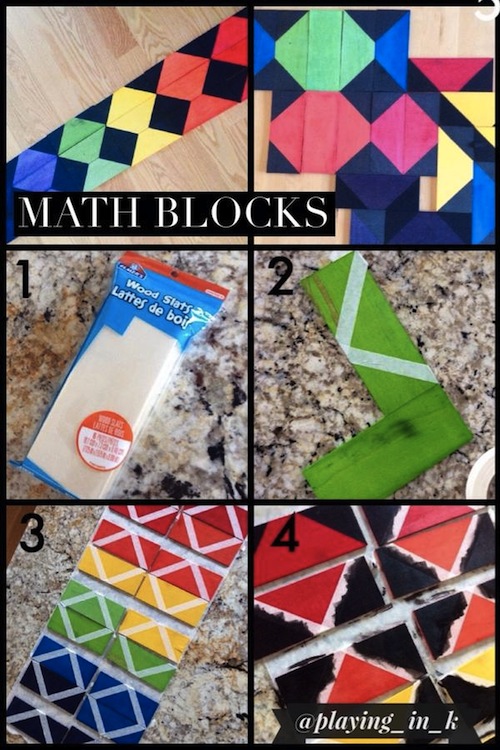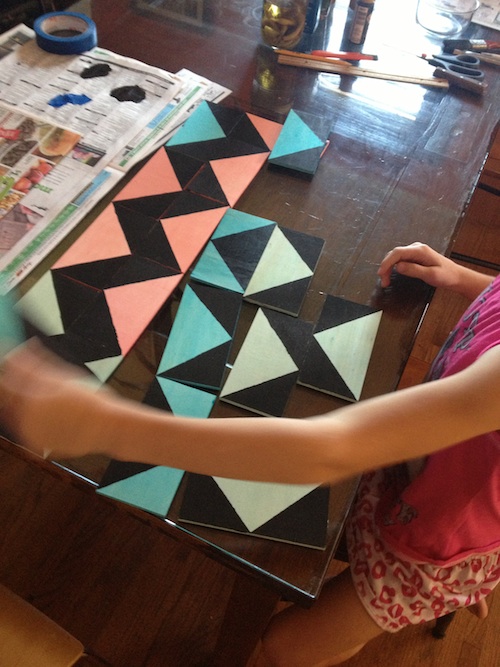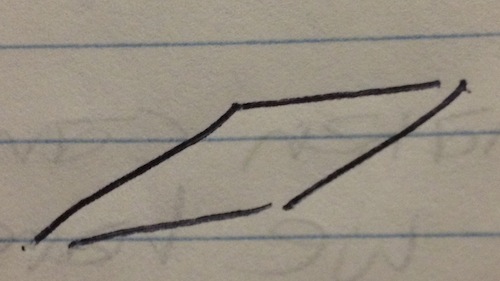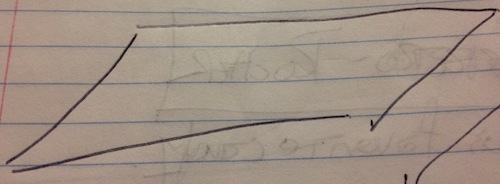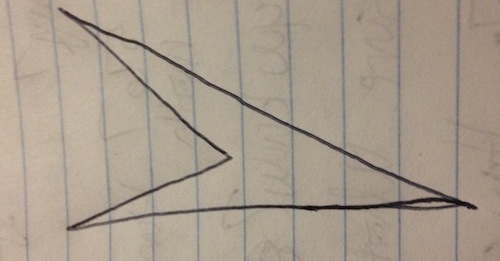It is no secret that one of my proudest achievements is creating a lovely space on Twitter where people share stories of children’s math talk. Come read along on the #tmwyk hashtag.
That’s where I came across this tutorial-in-photos.
I decided to make myself some. I modified the design a bit (but the food coloring is a genius idea! I used that for sure.)
Then I left them out on Sunday morning and waited for a child to happen along.
Sure enough, Tabitha began making things.
I ate breakfast in the other room.
Ten minutes later, she came in carrying two tiles, put together so that the blue triangles made a square.
Tabitha (7 years old): A square is just a diamond, but I don’t think all diamonds are squares.
Me: Can you draw me a diamond that isn’t a square?
T: The skinny ones wouldn’t be squares.
Me: Yeah. I think I get it. Draw me one, though.
She proceeded to do so. It took a couple of tries.
I lost the paper, but the result looked something like this.
Then, a few moments later she asked a new question.
T: Aren’t all 4-sided things squares?
Me: The doorway isn’t. One of those tiles has four sides but isn’t a square.
I quickly draw a parallelogram in my notebook.
Me: This isn’t
I drew another 4-sided shape.
Me: This isn’t either.
T: That has 3 corners, not 4. So it can’t be a square.
Me: Show me the three corners.
She counted the three corners that point out from the center of the shape, missing the one that points back inward. She paused.
T: Oh…four.
So What Do We Learn?
Opportunity to think about math is important. Something as simple as leaving an interesting math object out for children to play with can lead to fun math talk.
Tabitha was working on the definitions of square and diamond in this conversation, and she was paying attention to the properties of shapes. This is important work for elementary children. When children are very young—before about first grade—they are learning to identify shapes based on appearances. As they move further into elementary school, they need to start paying attention to properties—the number of sides, the number of vertices (“corners”), etc.
Starting the conversation
Make some of these tiles. The materials cost me less than $20 (mostly for the wood—I probably could have gotten it a lot cheaper), and the dying and painting took about an hour on a Saturday evening. Then leave them out.
Or leave out a bunch of squares, triangles and rectangles you cut out of construction paper (you can do this for under $3 and less than 10 minutes of cutting).
Then let the children play and be ready to talk.

